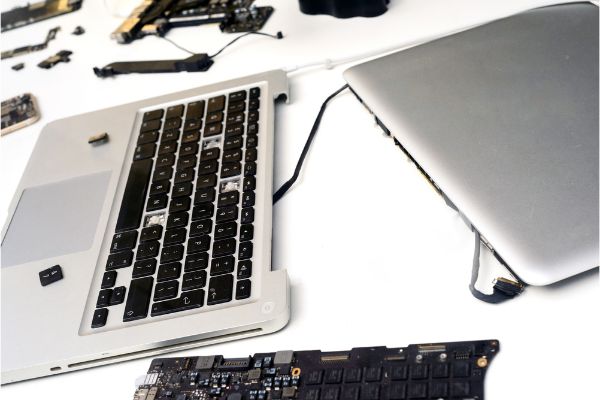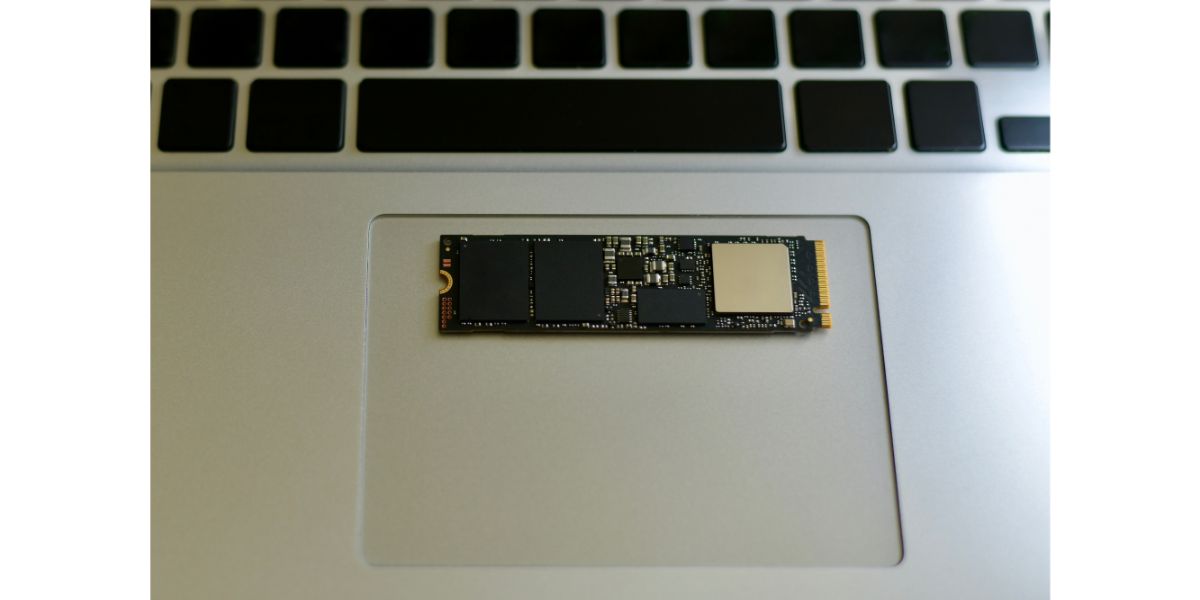Disclaimer: This post may contain affiliate links, meaning we get a small commission if you make a purchase through our links, at no cost to you. For more information, please visit our Disclaimer Page.
The MacBook is a great choice for a laptop, especially if you are already a fan or user of many other Apple products. The macOS operating system is designed to be compatible with many of the other devices the company produces. This means minimal setup or troubleshooting on your end, for the most part.
The casing is both sleek and relatively durable, and it should do a decent job of protecting the more sensitive internal components. However, this protection is mostly assumed to be under normal operations. Although accidental drops can happen, it is not usual for the MacBook to come into hard contact with the floor or other surfaces.
Because of all this, some MacBook owners might wonder what kinds of things are likely to happen to their laptops if they do drop them on the floor. We can go over some of these possibilities in our article on the topic. Although we will discuss whether a MacBook can survive a fall to the floor, we’ll also go over some of the computer’s problems if it still seems to work sporadically.
There are also some tests to run or other things you might want to check if you drop it on a particularly hard surface. As a final note, we’ll discuss the possible benefits of screens or protectors that you can buy for the MacBook, as well as the likelihood of you needing one based on some use cases.
Table of Contents
Can a MacBook Air Survive a Fall?
The short answer is that yes, a MacBook can certainly survive a fall to the floor. However, the longer answer is more complex.
MacBooks aren’t necessarily designed for hard impacts on surfaces at the velocities that a fall might produce. The soft metal casing should be good for absorbing some damage, and the laptop can still work after a fall, but this is not a guarantee.
How high the drop is and on what surface the Macbook is dropped on plays a big role is how much damage is done to it.
Even if your MacBook turns on after a fall, there are still some checks you might go through to see if everything is working. Opening apps and seeing if they function properly is one thing, but checking the system to make sure everything looks good with the central processing unit and memory is a great first step, too.
If you do drop the MacBook on the floor, do a physical check for dents in the casing or cracks in the screen. The unit could still function, but dents may make it harder to use the keyboard or keep the device closed.
Furthermore, a crack in the screen could make it hard to do whatever you need to do with various apps that the MacBook uses.
Some parts of documents may become hard to read, and video calls may be difficult to navigate. These issues might be exacerbated if the screen happens to be dark in some spots due to damage, or it is possible that some keys may no longer type letters properly.
What Happens When You Drop Your MacBook on the Floor?
We touched on how the physical shell or screen of the MacBook could take damage if you drop it on the floor, but this only relates to the outside of the laptop.
A bent case may be something that you can bend back, but it might be worthwhile to take it to authorized Apple technicians for repair, particularly if it is under warranty.
Even if you do manage to get the case back to something resembling its original shape, it is possible for the screen to have backlight bleed effects that were not present before you dropped the MacBook.
If you notice such things, it should only be in very dark environments with low ambient lighting, especially when the laptop is one of the few powered devices that is active.
If the case seems undamaged, it is still possible that some internal components are experiencing jarring from the impact of the fall. As you may know, some of the parts inside a MacBook have careful, delicate placements that allow them to do their jobs.
In many cases, one part will use circuits and connections to send signals and work with many other components around it.
Should any piece get too shaken out of place by some kind of fall, it may not be able to send or receive the appropriate instructions needed to do its job. Here, the fall could impede the basic function of the MacBook.
What Should You Do if You Drop Your MacBook? (Troubleshooting)
If you drop your MacBook on the ground, you should start by checking it over for damage. What type of damage it sustained, and the likelihood of it at all, may depend on the type of surface it hit.
For example, if you dropped the MacBook from a low desk onto a carpeted floor, the chances of any serious damage are lower than if you dropped it onto hardwood or concrete.
Similarly, dropping it from a relatively low height should, on balance, be less damaging to it than dropping it from higher up. That said, there is not a hard rule for measuring the likelihood of specific damages to the case or internal parts.
Here are a few general guidelines you can follow for some care following the incident with your MacBook:
1. Clean off the computer as best you can
Although it shouldn’t take on too much debris if you have dropped it in a relatively clean environment, it is possible to drop the laptop outside.
Doing so presents a much greater chance of getting dirt or dust in places that can make it hard to see damage. It can also clog ports, which could lead to the misconception that damage occurred. In reality, you may just need to remove obstructions from the ports.
2. Check for internal Damage
At this point, you could open the case to see if there is internal damage. However, you’ll need a wrist strap and some small tools in order to do this effectively. You should only do so if you feel comfortable checking for issues inside the casing.
3. Go to Apple Or Authorized Third Parties
If you do not feel like opening it yourself, you can find authorized Apple service providers in your area.
These technicians can take a look at it, particularly if the unit is still under warranty. You may also have AppleCare+ active for this device.
This service provides some extended coverage to applicable Apple products, and some of this extension applies to a set number of accidents per year for the life of the coverage.
4. Boot Up Macbook
The first boot after the drop may be the most critical.
This is when you’ll be taking a look at the drive in the best condition it should be in after an impact like this, and you should treat it gently.
You may wish to copy some data to a separate storage device for safety, but don’t do too much to the drive all at once.
5. Check Hard Drive Or SSD
If the hard drive or SSD has sustained any damage, it could have caused an overheating or physical expansion issue. In these cases, you might be able to bring it back to a usable state by sealing it in an appropriate container and freezing it for about an hour.
This is not a move we would recommend normally, but it is a last resort that you might be able to use if you really need to restore or copy critical data files.
6. Use Paid Software
In addition to possible support from Apple, some paid apps or software might be powerful enough to restore a damaged MacBook’s data to a state where you can retrieve it.
Do MacBooks Need a Case or Screen Protector?
No, there is not a general need for a case or screen protector for MacBook computers. Of course, we’re operating under the assumption that most users will be operating the MacBook normally.
This means there won’t be much damage to the case, and what minor bumps it may get should be absorbed easily.
Because the MacBook is not a touchscreen device, so there is little reason for a screen protector. While dropping the device can happen, it seems less likely to occur than dropping an iPhone that is constantly in and out of one’s hands.
Even so, you may prefer a screen protector or some kind of durable shell on your MacBook, and there is no problem with this.
Conclusion
MacBooks can survive some drops on the floor. Apple knows that these things happen, and it has incorporated such protections into parts of its extended service agreements that you can purchase.
If you do happen to drop yours, there are checks you can do to see how bad the damage is. Aside from physical examinations, you can run diagnostic programs that tell you how the major internal components function.
There are also some paid apps that might be able to help you recover data, but technicians should be able to look at this aspect of things for you, too.
Although covers or protectors aren’t required, you can add these if you feel that you’ll be working with your MacBook in situations where drops or damage might be more likely to happen.



